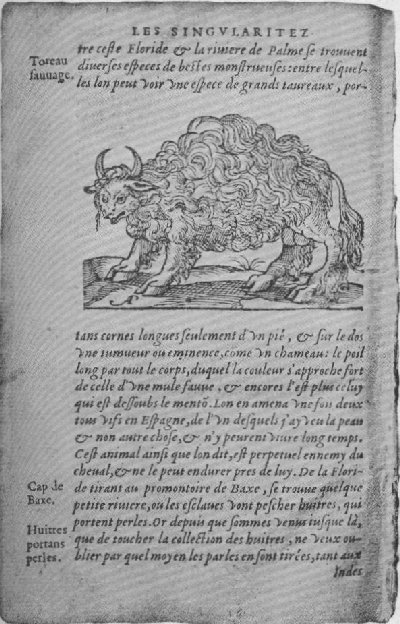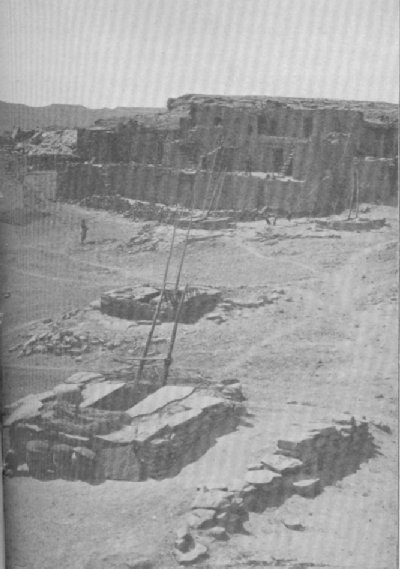THE SPANISH DISCOVERERS
What the Louisiana Purchase was. Early Spanish explorers. Discovery of the Mississippi. Pineda, Cabeza de Vaca, Coronado, De Soto, and Docampo. The Spaniards first in the field. Their weakness in colonization.
At the opening of the year 1803 the territory of the United States was bounded on the west by the Mississippi River.1 In April of that year a treaty was signed in Paris by which nearly a million square miles west of the Mississippi, stretching from the mouth of the river to British America, was purchased from France for $15,000,000, and the total area of our country was more than doubled. This great event is known in history as the Louisiana Purchase. By this treaty, which was signed by Robert R. Livingston and James Monroe representing the United States, and Barbé-Marbois representing the Republic of France, Napoleon Bonaparte — then the First Consul of France and afterward Emperor— ceded to the United States the territory which now contains Louisiana, Arkansas, Kansas, Missouri, Iowa, Nebraska, South Dakota, North Dakota, Montana, Wyoming, a portion of Colorado, and a part of Idaho, Oklahoma, and Indian Territory.2
It is easy now to see that this great addition to our country was of incalculable importance. At the time, however, the significance of the purchase, which has been called a turning point in our history, was not realized. We can understand the situation better by showing what had been learned up to 1803 of the vast region which Jefferson and Napoleon added to the United States.
It is sometimes said that the Louisiana territory was unexplored. In one sense this is true, but we shall find that as a matter of fact many white men had penetrated this wilderness. The first were Spaniards who followed after Columbus. The purpose of Columbus, and, for a time, of others after him, was to find a water way to Cathay, or China, and the Spice Islands by the westward route, and to secure their rich trade. The extent of America was so little understood that much time was spent in trying to find a passage through or around our continent. Cipango, as Japan was called, was supposed to lie much farther east; indeed, in some old maps it seems included within our boundaries. It was the Spanish pioneer explorers of the sixteenth century who first penetrated western North America and discovered the vast extent of our country.
It was in a search for this water route to the west that, in 1519, Don Diego Velasquez, the Spanish governor of Cuba, sent out four caravels commanded by Don Alonzo Alvarez de Pineda. The little fleet finally sailed westward across the Gulf of Mexico until Pineda met Cortes, the conqueror of Mexico, and his followers, who claimed that territory. The point of chief interest to us is that on his return. Pineda found the mouth of a great river, which he explored for a few leagues and named the Rio de Espiritu Santo. This was the Mississippi. We may think of Pineda therefore, as the first white man to approach the confines of the territory known later as Louisiana.
A few years later, in 1527, another Spaniard reached Louisiana, and the story of this man, Alvar Nuñez Cabeza de Vaca,3 is of peculiar historical interest. He was treasurer of an expedition sent from Spain to Florida. With his comrades he struggled across Florida to the Gulf, and then, sorely tried by their hardships, they built rude boats as best they could. Their horses were killed for food. The manes and tails and some vegetable fibers were twisted into ropes; rough tools and nails were wrought out of stirrups and spurs, and shirts were pieced together for sails. Finally, the unhappy fugitives put to sea in five boats. They were ignorant of the waters and the coast, but they hoped to reach the Spanish settlements in Mexico. After a time they passed the mouth of the Mississippi, and then their boats were shattered by storms, and only fifteen men lived to be cast upon an island west of the mouth of the Mississippi, which they aptly termed "The isle of Misfortunes."
Of this remnant all but four were slain by the Indians. Cabeza de Vaca himself was taken captive. For six terrible years he was held by his savage masters, who dwelt in eastern Texas and western Louisiana. Sometimes he was forced to act as a medicine man." Again he was sent out as a trader, making long journeys as far north as the Red River country, where, it is believed, he was the first white man to see the "hunch-backed cows," as the older Spanish writers termed the buffalo. Finally, at some point west of the Sabine River in Texas, he was reunited to his three surviving comrades. They succeeded in escaping from their captors, and by using the rites of medicine men," with which they mingled "earnest prayers to the true God," they preserved themselves from harm at the hands of other Indians.
Slowly and painfully they toiled westward across Texas, hoping to reach the Spaniards in Mexico. They seem to have crossed the Rio Pecos near its junction with the Rio Grande, and then crossing the latter river to have journeyed
through the Mexican states of Chihuahua and Sonora. Turning southward they finally, in May, 1536, reached Culiacan in Sinaloa, the northern outpost of Spanish settlement. Over two thousand miles were traversed by these fugitives in this flight, which restored them to their countrymen eight years after their ill-starred expedition landed in Florida.

From Thevet’s "Les Singularitez de la France Antarctique," Antwerp, 1558. (Wlnsor considers this one of the earliest, if not the earliest, picture of the buffalo.)
With the exception of their passage by the mouth of the Mississippi and some wanderings in Louisiana and to the north, they had had little to do with the actual territory of the Purchase,4 but the stories which these survivors brought back made others eager to explore the mysterious interior of the New World.
One story which appealed particularly to the imaginations of the Spaniards was a tale which Cabeza de Vaca had heard of the Seven Cities of Cibola, to the north, which were deseribed as full of treasures. In search of these cities a fearless priest, Fray Marcos de Nizza, started from Sinaloa in 1539, taking with him one of Cabeza de Vaca’s companions, a negro named Estevanico. He found no treasures, but he reached the "cities," which are believed to have been the pueblos or villages of the Zuñi Indians near the present Zuñi village in western New Mexico.
When he returned and reported that he had actually seen certain strange towns to the north, there was a stir among the Spaniards, always tireless in the quest for treasure. The viceroy of Mexico, Mendoza, promptly organized an expedition under the command of Coronado, governor of New Galicia, to take possession of this rich country. He started in 1540, captured the Zuñi villages and wintered in New Mexico, where he heard a marvelous tale which brought destruction to many of the early treasure seekers. This was the legend of Quivira, a wonderful city of gold. Lured by this golden myth, Coronado crossed Indian Territory and pressed on to northeastern Kansas,5

(From a photograph)
He found a tribe of Indians called the Quiviras, but they had no gold and knew of none, and he was forced to make his painful way back empty-handed. This wonderful journey of Coronado may be called the first great exploration within the Louisiana territory.
1 On the south the boundary was the thirty-first parallel of latitude from the Mississippi to the Apalachicola, down the middle of that river to the Flint, thence to the head of St. Marys River, and down the latter to the sea.
Return to text.
2 Much attention has been given by historians to the question whether or not Texas was or should have been included in the Louisiana Purchase. Henry Adams and Professor Edward Channing are among the more conspicuous advocates of Texas as a part of Louisiana, and Professor A. C. Mc Laughlin declares that France "had good ground for claiming the Texas country perhaps even to the Rio Grande." Schouler and H. H. Bancroft take a contrary view, and the thesis that Texas was not a part of the Louisiana Purchase is ably maintained in an interesting monograph by Professor John R. Ficklen. This discussion is not essential to the present narrative, since the United States, after claiming the territory as far west not only as the Rio Bravo but even to the Rio Grande, yielded the point in 1819, when by treaty with Spain the Floridas were acquired and Texas abandoned.
Return to text.
3The "Relation" of Cabeza de Vaca's journey, by himself, was first published at Zamora, Spain, in 1542. The first edition of Buckingham Smith’s translation appeared in 1851, and the last, after his death, in 1871. While the translator’s notes cannot be accepted implicitly in the light of later research, this translation holds a place of peculiar distinction in our early history as the first presentation in English of a most important source of historical knowledge.
Return to text.
4 That is, of course, eliminating Texas.
Return to text.
5General Simpson believed that Coronado reached a point somewhere in the eastern half of the border country of Kansas and Nebraska. Bandelier placed the main seat of the Quiviras "in northeastern Kansas, beyond the Arkansas River and more than 100 miles northeast of Great Bend."
Return to text.
Continue
Back to list
Back to Legacy
© 2001, Lynn Waterman